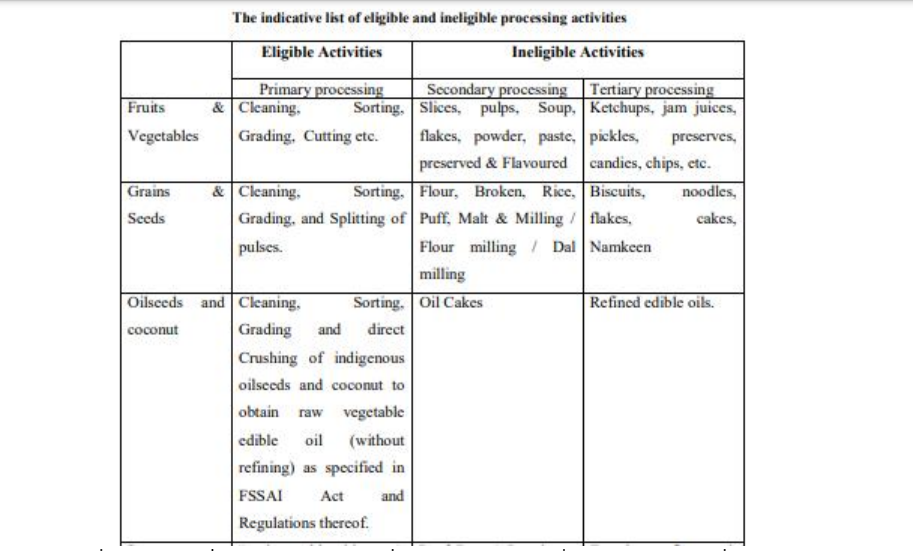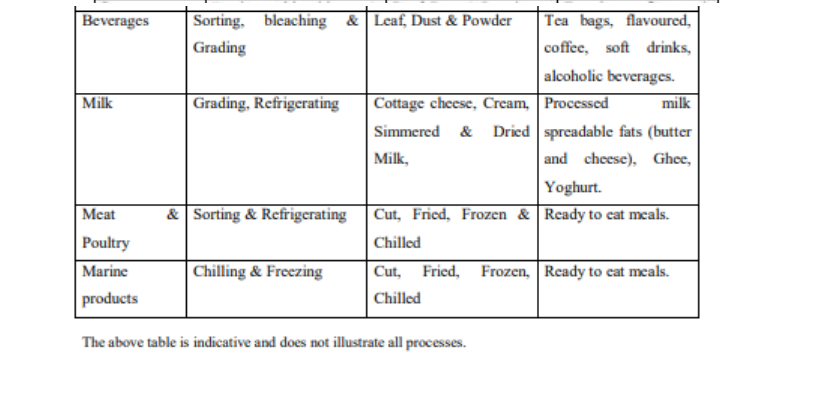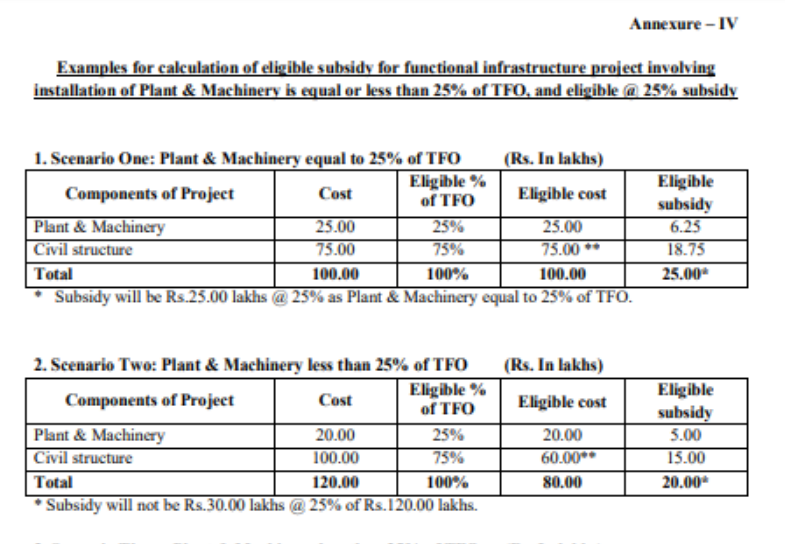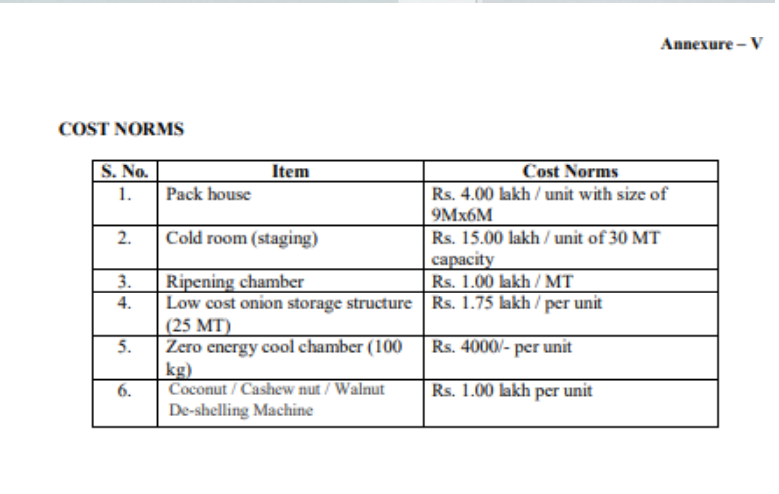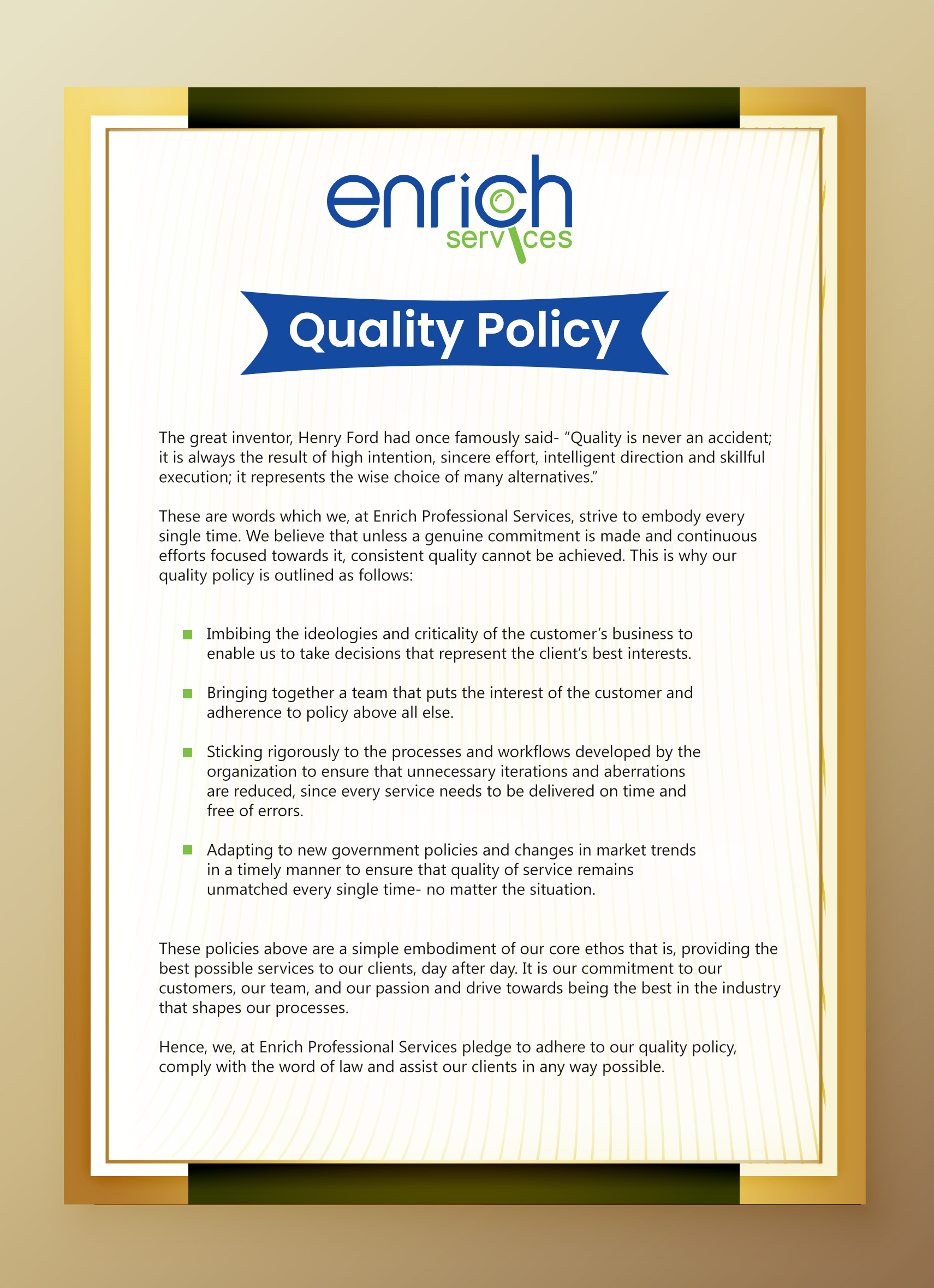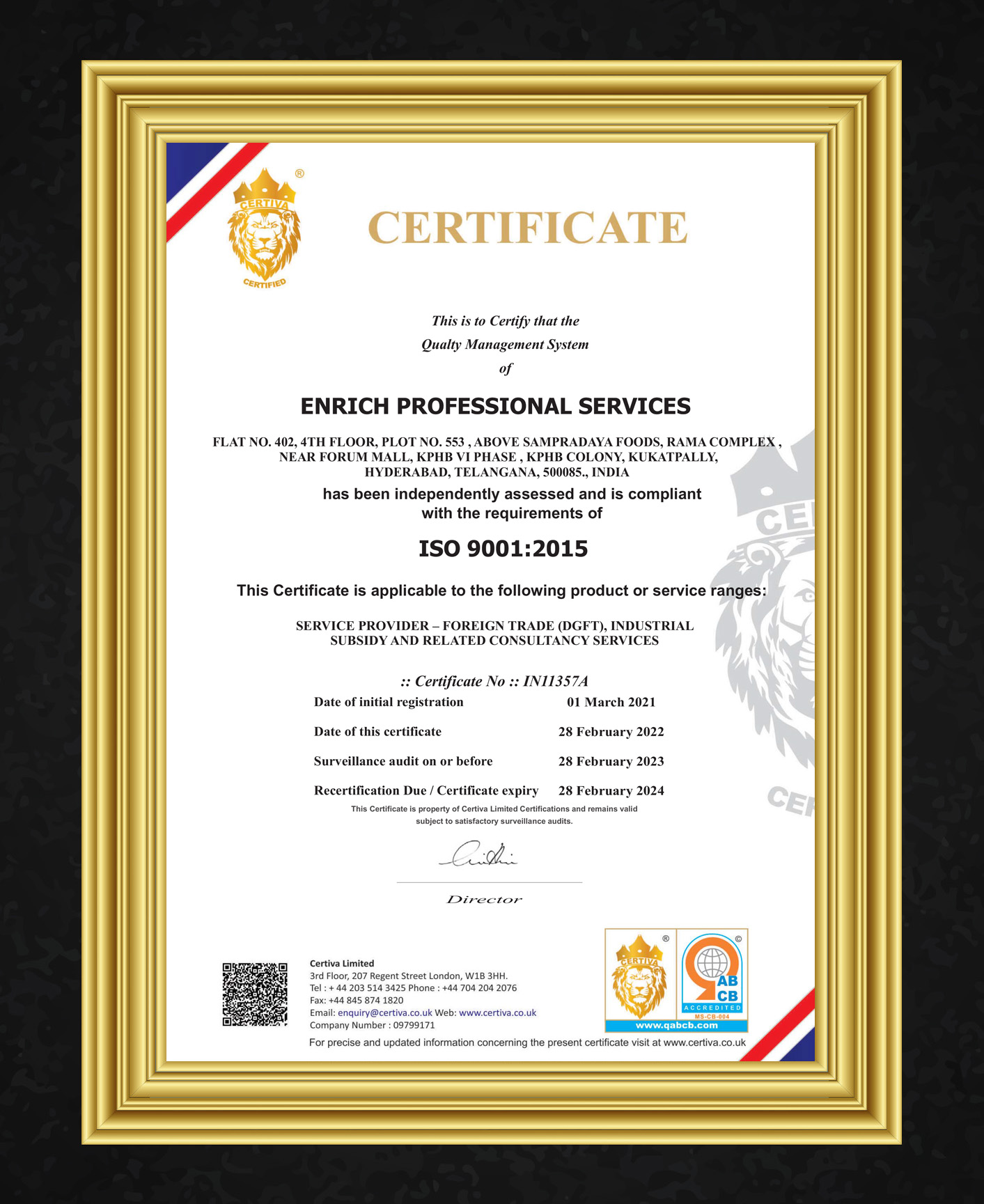We Are Here To Enrich Your Business !!
-
DGFT Enquiry
+91 72880 77744
-
Subsidy Enquiry
+91 72880 77722
-
Email
New Agricultural Marketing Infrastructure scheme for Rural Godowns / Warehouse & Primary Processing units from Nabard
In India where small and marginal farmers constitute major farming community, do not have the facility to retain the farm products with themselves till the market prices are favourable. It is very much essential to provide them with facilities for primary processing and scientific storage so that to avoid produce deterioration and enable them to meet their credit requirement. An establishment of primary processing units and rural godowns will enable small and marginal farmers to increase their holding capacity which will make them to sell their produce at remunerative prices and avoid distress sales. Accordingly, this New Agricultual Marketing Infrastructure scheme has been introduced by Govt. of India.
Objectives
The scheme's main goals are to build scientific storage capacity and related facilities in rural areas to meet farmers' needs for storing farm produce, processed farm produce, consumer goods, and agricultural inputs; to promote grading, standardisation, and quality control of agricultural produce to improve their marketability; and to avoid immediate distress sales.
FEATURES THAT ARE HEALTHY (Linkage to Marketing Reforms)
State/UT agency non-storage infrastructure projects in those States/Union Territories that have amended their respective APMC Acts to include provisions for
- direct marketing;
- contract farming
- in the private and cooperative sectors, the establishment of a wholesale market for agricultural and associated products;
- e-trading
- a unified single trading licence that is valid throughout the state/UT
- A single point market fee levy shall be eligible for assistance under the sub-scheme across the State/UT.

BENEFICIARIES WHO ARE ELIGIBLE:
Storage infrastructure (capacity 50-5000 MTs) and non-storage infrastructure:
Individuals, Group of farmers / growers, FPOs/FPCs registered under respective companies Act/cooperatives societies Act/ societies registration Act (with minimum 50 number of farmer members); Partnership/ Proprietary firms, Companies, Corporations; Non Government Organizations (NGOs), Self Help Groups (SHGs); Cooperatives, Cooperative Marketing Federations; Autonomous Bodies of the Government, Local Bodies, Panchayats; State agencies including State Government Departments and autonomous organization / State owned corporations such as Agricultural Produce Market Committees & Marketing Boards, State Warehousing Corporations, State Civil Supplies Corporations etc.
Storage infrastructure (capacity 50 – 10,000 MTs):
State agencies include State Government Departments and autonomous organizations/stateowned enterprises such as Agricultural Produce Market Committees and Marketing Boards, State Warehousing Corporations, and State Civil Supplies Corporations, among others.
ELIGIBLE MARKETING INFRASTRUCTURE:
It is because one of the sub-goals scheme's is to ensure that farmers receive fair prices for their produce, actions involving storage or other marketing infrastructure up to primary processing will be covered. Cleaning, cutting, de-podding, de-cortication, dehusking, de-shelling, Grain cleaner, specific gravity separator, mini rice huller, drying equipments (solar/normal), bleaching, grading, sorting, packing/bag stitching, labelling, waxing, ripening, chilling, pasteurisation, homogenization, freezing, refrigeration, and other primary processing are eligible for AMI subsidies. Moreover, Mini Oil expeller for extraction of edible vegetable oil (as per FSSAI but without refining) from indigenous oilseeds (viz. Mustard seed, sesame seed, ground nut, linseed, mahua, safflower, nigerseed oil, coconut, almond and olive only) and Mini Dal mill for primary processing of pulses, including cleaning, grading, sorting, splitting, packaging and labelling to promote direct Only sheds and oil-expanders powered by up to 7.5 Horse Power are eligible for the subsidy for such projects (HP).
Annexure II contains a list of processing activities that are eligible and those that are not
Infrastructure for collection/assembly, drying, cleaning, grading, standardising, SPS (Sanitary and Phyto-sanitary) measures and quality certification, labelling, packaging, ripening chambers, waxing, value addition facilities (without affecting the product form), and so on.
Plant and equipment costs should be higher than 25% of the total financial outlay (TFO) of functional infrastructure projects (other than storage projects) when plant and machinery is to be put in civil structure. If it is less than 25%, the subsidy will be limited as described in Annexure IV. When the infrastructure is of the storage kind, the cost of storage is higher. When the infrastructure is of the storage type, the cost of the civil structure will be estimated according to the storage infrastructure's capacity and cost criteria
Platforms, sheds, drying facility (solar/normal), electronic weighing scale, assaying equipments, Computer IT equipments with internet connection, Godown, cold room, deep freezer/ Zero energy freezer, pack house, ripening chamber, information boards (electronic/non-elec) may be included in the infrastructure for developing/upgrading Rural Haats/RPMs as Grameen Agricultural Markets. Parking sheds, interior roads, garbage disposal arrangements, lighting arrangements, drinking water facilities, toilets, and other ancillary / supporting infrastructure are all permitted components.
However, as mentioned in Annexure III, the subsidy for auxiliary / supporting infrastructure in the project will be limited to 25% of the total permitted subsidy for the project. Annexure-V lists the cost norms for the pack house, cold room, ripening chamber, low-cost onion storage, and zeroenergy cold chamber.
Godowns, including stand-alone silos for food grain storage, as well as associated facilities such as loading, unloading, and bagging, are examples of storage infrastructure that are eligible. The cost of associated facilities such as a boundary wall, internal road, internal drainage system, weighing, grading, packing, quality testing & certification, fire fighting equipment, and other features essential to operate the project would be covered by storage infrastructure assistance.
All promoters across the country with a capacity of 50-5000 MT and State agencies with a capacity of 50-10000 MT in all States/UTs are eligible for subsidy under the sub-scheme.
Silos with a capacity of up to 15000 MT can be built for State Agency storage projects. The cost norms, subsidy percentage, and subsidy ceiling amount for state agencies for storage projects, as well as all other circumstances, shall stay the same. The Scheme does not include any funding for storage infrastructure renovations.
INSTITUTIONAL LENDING:
The sub-subsidy scheme's is tied to institutional credit and will only be accessible for projects financed by commercial, cooperative, regional rural banks, agricultural development finance companies (ADFCs), and state cooperative banks (SCBs), State Cooperative Agricultural and Rural Development Banks (SCARDBs), Scheduled Urban Cooperative Banks (SUCBs), Scheduled Primary Cooperative Banks (PCBs), North Eastern Development Financial Corporation (NEDFi), and other institutions eligible for refinancing by the National Bank for Agriculture and Rural Development (NABARD) or any other approved financial institution, such as State Financial Corporations (SFCs).
PROMOTER'S CONTRIBUTION AND TERM LOAN:
The promoter's contribution should be a minimum of 20% of the project cost. This should be ensured at the time of the project's real expense. If it is less than 20%, the actual TFO of the project will be limited to 5 times the promoter's contribution on project completion for the subsidy computation. The Financial Institution (FI) must grant a minimum term loan (including subsidy) of 50% of the project cost. The promoter's contribution might range from 20 to 50 percent of the TFO, while the term loan could range from 50 to 80 percent of the TFO.
SUBSIDY PATTERN:
The sub scheme envisages back-ended capital subsidy for investment in eligible storage, marketing infrastructure projects is as under:
FOR STORAGE INFRASTRUCTURE PROJECTS:
Capital cost of the project for the purpose of subsidy will be calculated on the project cost as appraised by financial institution or actual cost of eligible components as certified by a Chartered Accountant, whichever is lower subject to the subsidy ceiling per MT as well as overall ceiling given below:
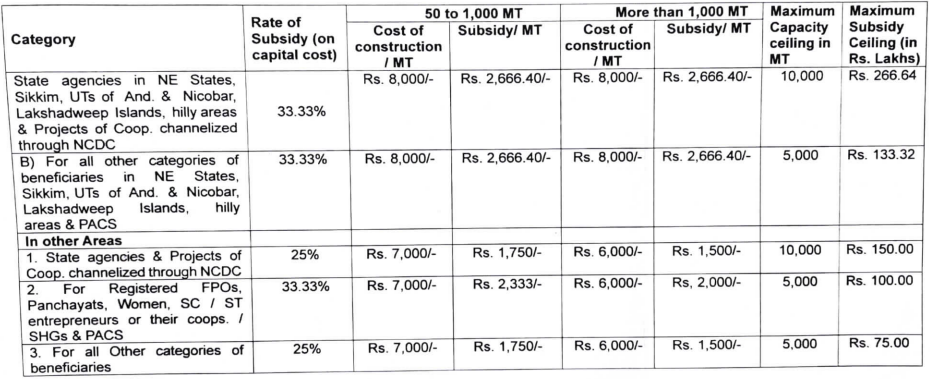
Cost norms for computing subsidy for silos will be same as for other storage infrastructure.
FOR INFRASTRUCTURE PROJECTS OTHER THAN STORAGE (NONSTORAGE) INFRASTRUCTURE INCLUDING FARMER-CONSUMERS MARKET AND DEVELOPMENT AND UPGRADATION OF RURAL HAATS/RPMs into GrAMs : Capital cost of the project for the purpose of subsidy will be calculated on the Project cost as appraised by financial institution or actual cost of eligible components as certified by a Chartered Accountant, whichever is lower.
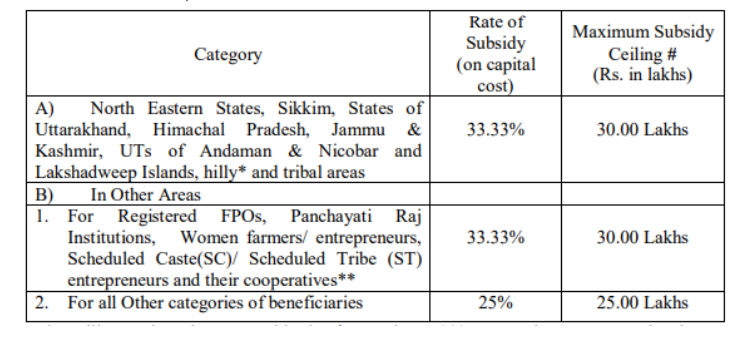
* Hilly area is a place at an altitude of more than 1,000 meters above mean sea level.
** SC/ ST Cooperatives to be certified by the concerned officer of the State Government
# For the projects of pulse splitting and oil crushing, the maximum subsidy for 25% category is Rs.12.50 lakh and 33.33% category is Rs.16.66 lakh only
RELEASE OF FUNDS AND SUBSIDY:
Advance subsidy: NABARD will release advance subsidy to the FI for keeping the same in a Subsidy Reserve Fund (SRF) account of the concerned borrowers, to be adjusted finally against loan amount. This amount of 50% eligible subsidy would be released by NABARD to the FI on submission of a project profile-cum-claim form (Annexure-VIII) complying to sub scheme guidelines.
Final subsidy: Remaining 50% of the eligible subsidy amount will be released to the FI by NABARD after an inspection and recommendation by a Joint Inspection Committee (JIC) comprising of officers from NABARD (or its representative), FI and Directorate of Marketing & Inspection (DMI).
TIME SCHEDULE FOR SUBMISSION OF APPLICATION AND COMPLETION OF PROJECT:
FOR DISBURSEMENT OF ADVANCE SUBSIDY: FI will within 60 days of disbursal of the first instalment of loan, submit to RO, NABARD, through its controlling / nodal office, a brief project profile-cum-claim form for advance subsidy in the prescribed form given in Annexure-VIII along with the documents as per check list at Annexure-IX. A copy of the claim form along with all documents should also be submitted to the Regional Office / Sub-Office of DMI. FI will also inform the promoter about submission of the proposal to RO, NABARD & DMI. NABARD will submit a list of all the advance subsidy claims received at their end to the concerned DMI RO/SO on monthly basis. NABARD on regular basis will take up the matter of timely submission of advance subsidy claims with SLBC.
